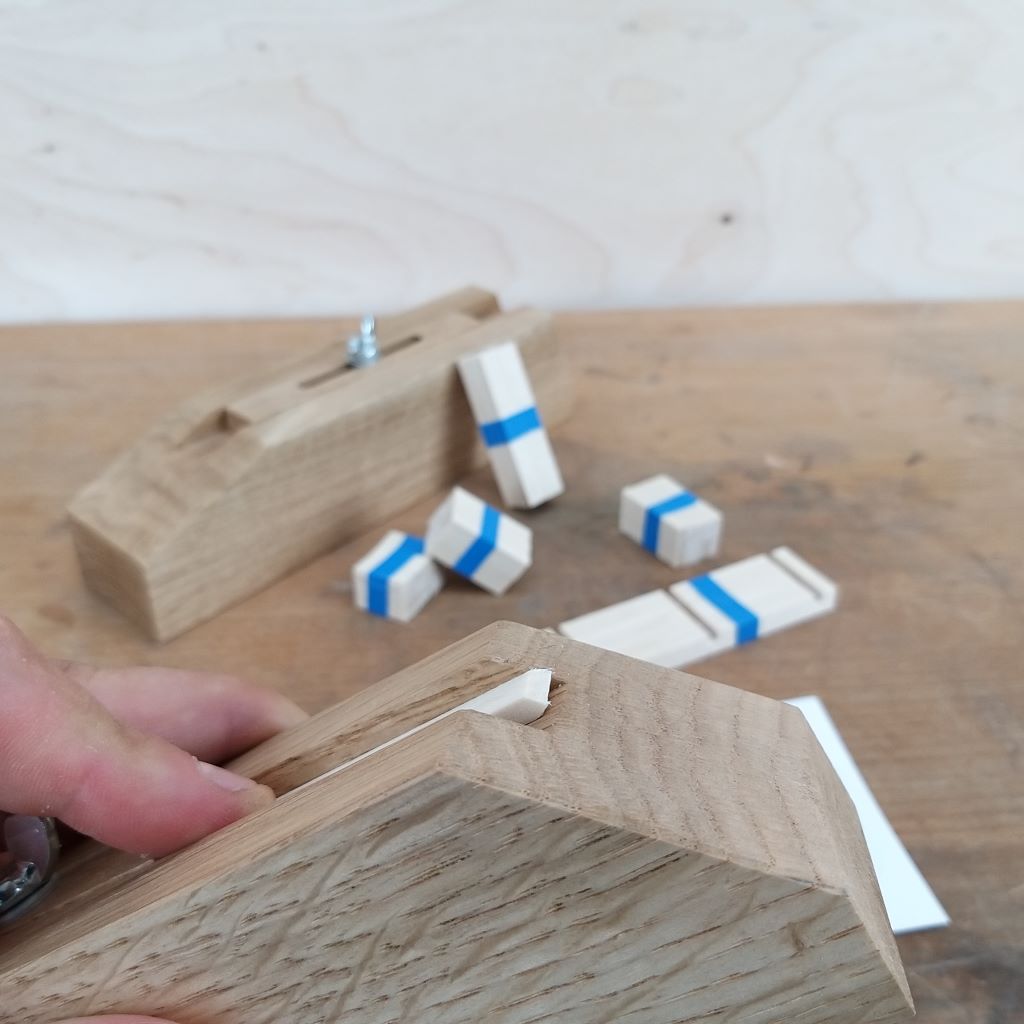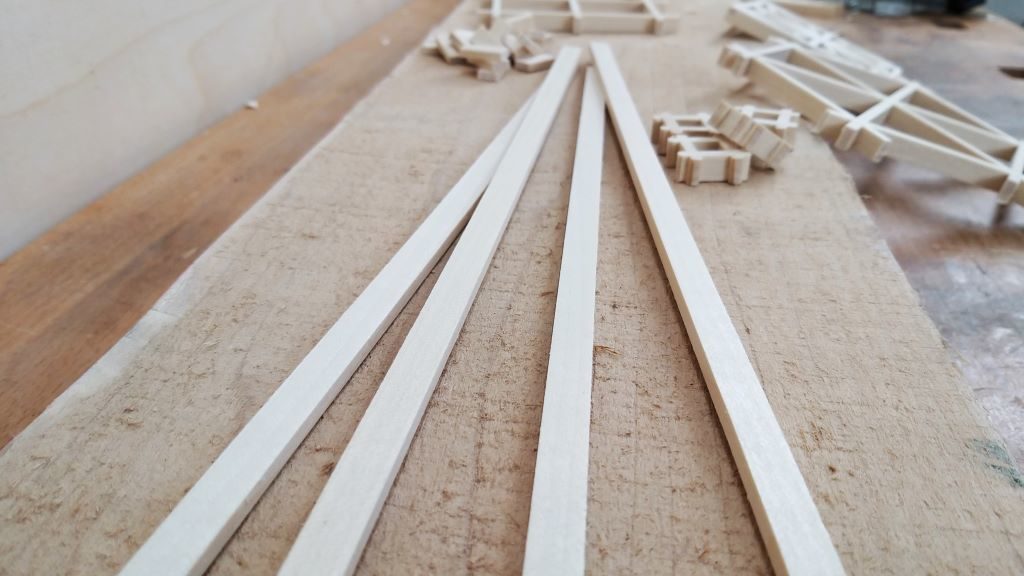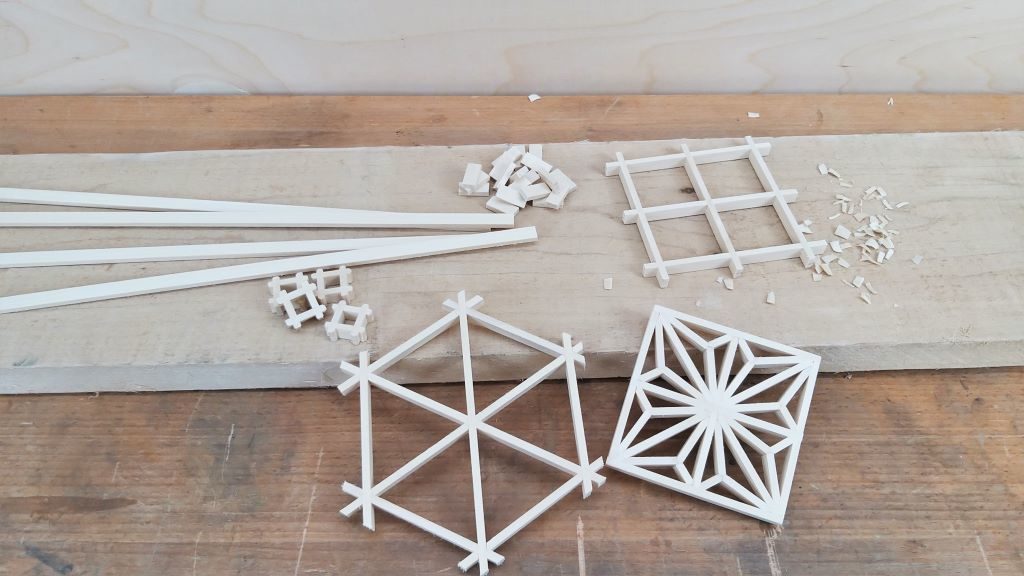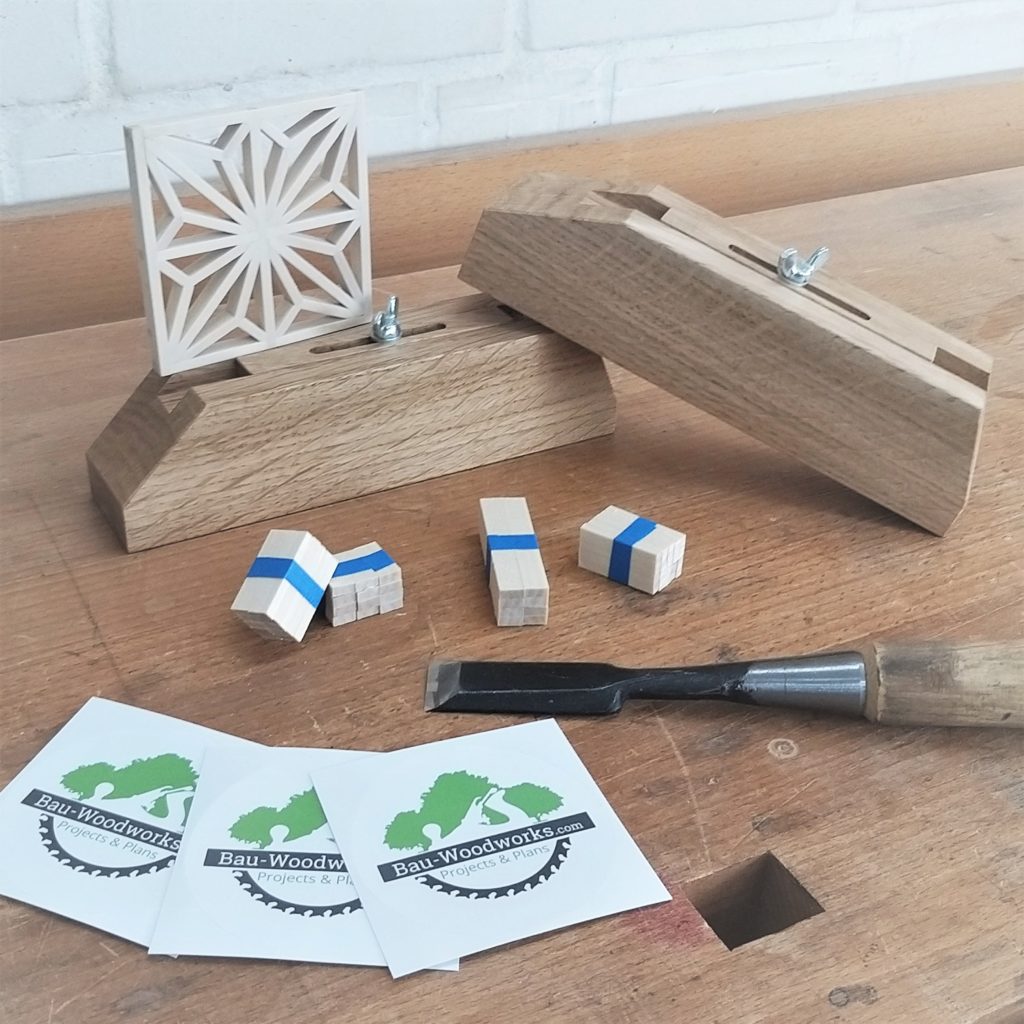
Choosing the right species for your wood latticework makes it much easier and enjoyable.
When I made my first Kumiko pattern I didn’t ask myself this question and started with oak. Why this was a bad idea, I am gonna explain in a minute.
Traditionally Japanese Kumiko work is made out of Japanese cedar or Japanese cypress, but not everybody lives in Japan and has access to that. Nor has it the right color for every project.
Here I am gonna write a little bit about the best wood for making Kumiko. Although there is no definite answer to that question. As usual, it depends…
In general, you want to use boards with straight, tight grain and with as little color differences as possible. Since the Kumiko pattern itself is visually very striking, the quiet grain gives a more uniform and calm look. If you have different color tones in your infill pieces, you will see the beveled corners pretty clearly and the Kumiko will look like a bunch of strips thrown together instead of a clean pattern.
Another concern is the hardness of the wood. Softer wood will compress a little when you put the pieces together. A harder wood like oak will not compress as much and makes it harder to get a clean pattern. And that is exactly what happened to me. Choosing oak for my first pattern ever made it so much more difficult.
When you choose the wood you also want to take a species that takes an edge well and does not splinter as much.

Considering the facts here are some wood species to start with.
The most known wood for Kumiko right now is basswood. It scores well on all the three factors above, is a great wood for hand carving and is relatively cheap compared to other hardwoods.
Another good choice can be white pine which is similar to basswood.
My favorite species for Kumiko is whitewood (yellow popular). My lumberyard was short of basswood and I told them what I wanted to use it for. They suggested whitewood and I gave it a try. I did not regret that move. It was so great to work with and the Kumiko turned out so good. Also, the availability and selection of whitewood at my lumberyard is pretty good. That makes it perfect for me.

Especially if you want to use contrasting species in a Kumiko panel or match the color of other components in your workpiece you may need to turn your attention to some other species. Cherry, oak, walnut and mahogany are also great for Kumiko. But since they are considerably harder, they are less forgiving, way harder to pair and it is more difficult to achieve a nice Kumiko pattern without gaps.
Summary
You need a wood species that pairs well and boards with little defects, minimal color differences and straight grain.
Basswood, white pine and whitewood are great woods for beginners in Kumiko. Cherry, oak, walnut and mahogany can be necessary because of color but are more challenging to work with.
Get your Kumiko Starter Kit now
In my shop, you find Kumiko kits for sale. Give yourself a headstart and order one right away.




